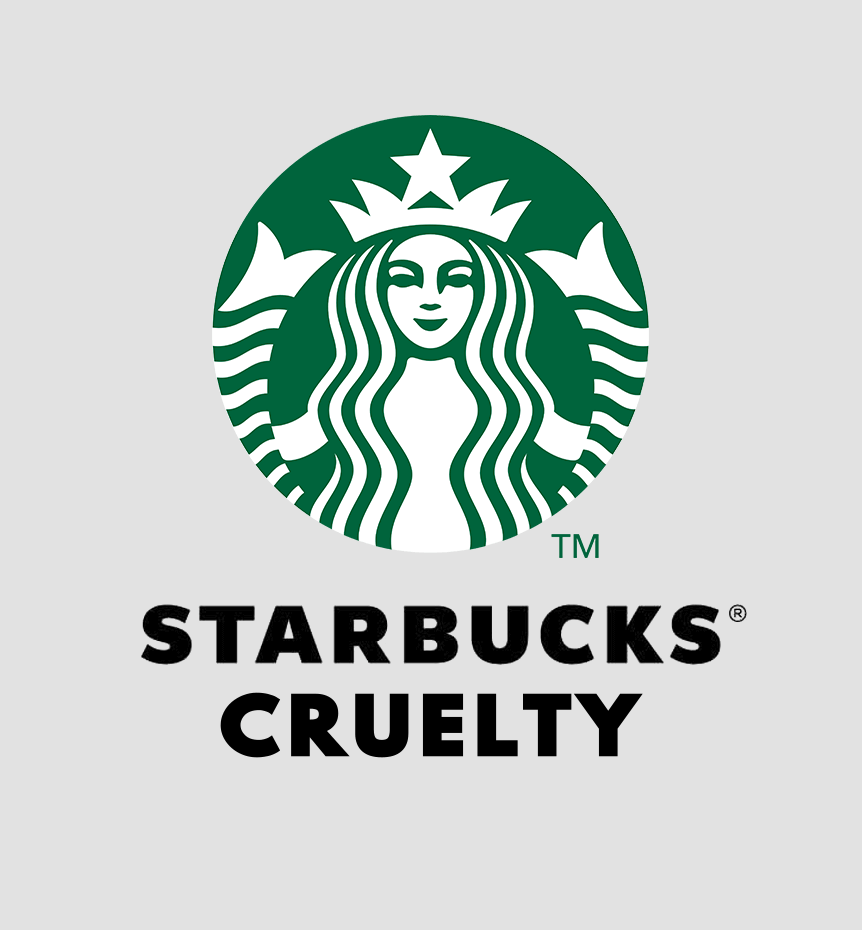
ความโสโครกและการทารุณกรรมสัตว์จากสตาร์บักส์
ไข่ของสตาร์บักส์พาโลกตะลึง
คุณเคยแวะดื่มกาแฟหรือกินอาหารร้านสตาร์บักส์หรือเปล่า ถ้าเคย คุณอาจจะอยากลองคิดดูอีกที เพราะมีวีดีโอใหม่เผยถึงความเสี่ยงด้านความปลอดภัยของอาหาร และการทารุณกรรมสัตว์อันแสนโหดร้าย ก่อนจะออกมาเป็นไข่ที่ใช้ในร้านสตาร์บักส์ในเอเชีย
ในฟาร์มที่นำแม่ไก่ขังกรงนั้น อุจจาระ สิ่งสกปรกจะกองพอกพูนกันที่พื้นกรงที่แม่ไก่วางไข่ ห่างจากไข่ที่นำไปรับประทานและตัวแม่ไก่เพียงไม่กี่นิ้วเท่านั้น แม่ไก่จะถูกจับขังกรงเล็ก ๆ เบียดเสียดกันจนถึงวันสุดท้ายของชีวิต เรื่องนี้ถือเป็นการทารุณกรรมสัตว์ที่ผิดกฎหมายในหลายสิบประเทศทั่วโลก ซากไก่จะถูกปล่อยให้เน่าใกล้กับแม่ไก่ที่ยังมีลมหายใจและยังวางไข่ต่อเพื่อการบริโภคของมนุษย์
สตาร์บักส์ได้ประกาศแล้วว่าจะใช้ใช้ไข่จากแม่ไก่ที่ไม่ขังกรงเท่านั้นในการทำอาหารขายในร้านของบริษัทเองภายในปี 2020 ซึ่งปลอดภัยกว่า คุณภาพสูงกว่า และถูกหลักมนุษยธรรมมากกว่า อย่างไรก็ตามสตาร์บักส์ไม่ได้ปฏิบัติตามข้อตกลงอย่างจริงจัง อีกทั้งสตาร์บักส์ยังไม่สามารถทำตามเป้าหมายที่จะใช้ไข่แม่ไก่ที่ไม่ขังกรงในตลาดเอเชียหลายแห่ง ดูเหมือนว่าทางสตาร์บักส์จะคิดว่าชาวเอเชียไม่สมควรได้กินอาหารมีคุณภาพ เพราะยังเสิร์ฟอาหารเมนูไข่จากฟาร์มที่เลี้ยงไก่ในกรงอันโหดร้ายและโสโครก โดยไม่แสดงความต้องการที่จะเปลี่ยนแปลงใด ๆ
ร้านอาหารและคาเฟ่ชั้นนำหลายแบรนด์ชั้นนำได้ประกาศความตั้งใจแล้วว่าจะใช้เพียงไข่จากแม่ไก่ที่ไม่ได้ขังกรงทั่วสหรัฐอเมริกา ยุโรป เอเชียและทั่วโลก รวมถึงร้านเบอร์เกอร์คิง, ซับเวย์, เพร็ต ตะ มองเช่, ปาป้าจอห์น, ทิม ฮอร์ตันส์, และคอสต้าคอฟฟี่ก็ได้ประกาศกร้าวว่าจะใช้เพียงแต่ไข่จากแม่ไก่ที่ไม่ได้ขังกรงเท่านั้นทั่วสหรัฐอเมริกา ยุโรปและเอเชีย เช่นเดียวกับบริษัทอาหารชั้นนำอีก 50 แบรนด์
ถึงเวลาแล้วที่ทางสตาร์บักส์ต้องเอาอย่างร้านอาหารและคาเฟ่ระดับโลกชั้นนำอื่น ๆ ด้วยการกำหนดเวลาว่าทางร้านจะขายเพียงไข่จากแม่ไก่ที่ไม่ได้ขังกรงได้ทั่วเอเชียได้เมื่อใด
ร่วมลงชื่อร้องเรียนกัน!
สตาร์บักส์: ฉันจะไม่ดื่มกาแฟหรือกินอาหารจากร้านคุณแล้ว จนกว่าคุณจะทำตามร้านอาหารชั้นนำอื่น ๆ ด้วยการเลิกใช้ไข่จากกรงทารุณสัตว์เน่า ๆ ถึงเวลาแล้วที่สตาร์บักส์ต้องใช้ไข่จากไก่ที่ไม่ขังกรงแบบ 100%
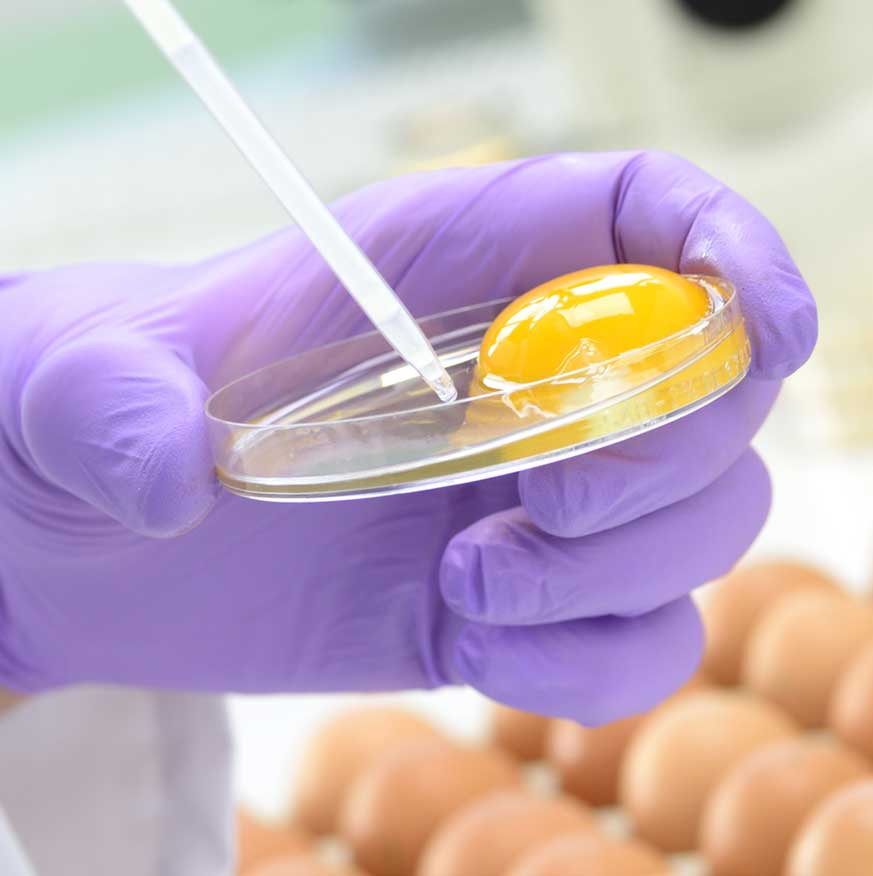
ความเสี่ยงด้านความปลอดภัยของอาหารจากไข่ไก่ขังกรง
งานวิจัยทางวิทยาศาสตร์กว่าสิบชิ้นพบว่าไข่ไก่จากฟาร์มที่ขังกรงมีอัตราการปนเปื้อนเชื่อซัลโมเนลลาพุ่งสูงกว่ามาก องค์กรด้วยความปลอดภัยของอาหารยุโรป (EFSA) ทำการศึกษาครั้งใหญ่ที่สุดเท่าที่เคยมีมาในด้านนี้ โดยวิเคราะห์ข้อมูลจากฟาร์ม 5,000 แห่งและพบว่าไข่ที่มาจากฟาร์มที่ขังแม่ไก่ในกรงนั้นมีอัตราปกเปื้อนเชื้อซัลโมเนลลาสายพันธุ์หลักสูงกว่าถึง 25 เท่า。(1, 2, 3, 4, 5, 6, 7, 8, 9, 10, 11, 12, 13, 14, 15, 16, 17)
สาเหตุมากมายที่ทำให้แม่ไก่ขังกรงก่อให้เกิดความเสี่ยงด้านความปลอดภัยของอาหาร กรมการเกษตรของสหรัฐอเมริกามีงานวิจัยที่ชี้ว่าการถูกขังกรงทำให้แม่ไก่อ่อนแอต่อการติดเชื้อต่าง ๆ ได้มากกว่า และกรงก็ยังทำความสะอาดฆ่าเชื้อยาก ทำให้ “มีเศษมูลและฝุ่นปนเปื้อนมากกว่า”。(18, 19, 20, 21, 22, 23)
ไข่จากไก่ขังกรงคือทารุณกรรม
ไก่เป็นสัตว์ฉลาด มีความรู้สึกเจ็บปวดและเป็นสุขได้ไม่ต่างจากสุนัขและแมว การนำไก่ขังกรงแคบ ๆ จนแทบขยับตัวไม่ได้นั้นเป็นเรื่องที่ผิดอย่างแน่นอน。(24)
กรงไก่แบตเตอรี่โหดร้ายกับไก่มากจนถูกแบนในหลายสิบประเทศทั่วโลก องค์กรคุ้มครองสัตว์หลัก ๆ ทั่วโลกต่างออกมาประณามการใช้กรงไก่แบตเตอรี่ว่าทารุณกรรมสัตว์และไร้มนุษยธรรม。(25, 26, 27)
นี่คือสิ่งที่องค์กรพิทักษ์สัตว์บางแห่งออกมาพูด:

พฤติกรรมที่แสนธรรมดาอย่างกระพือปีกหรือเกาะกิ่งไม้ มันยังทำไม่ได้เลย ทาง SPCA มีความกังวลต่อสวัสดิภาพของไก่หลายล้านชีวิตนี้อย่างยิ่ง” SPCAฮ่องกง

“กรงไก่แบตเตอรี่ไร้ซึ่งมนุษยธรรมอย่างสิ้นเชิง นอกจากจะอึดอัดเหลือทนแล้ว ยังไม่เปิดโอกาสให้แม่ไก่ที่วางไข่ได้ทำรังหรือคลุกฝุ่นด้วย… อุตสาหกรรมอาหารควรใช้ไข่จากไก่ที่ไม่ขังกรงโดยเร็วที่สุด” SPCAไต้หวัน

“แม่ไก่ที่ถูกขังในกรงจะมีความเครียดและการบาดเจ็บมากกว่า และยังเพิ่มความเสี่ยงต่อเชื่อซัลโมเนลลาด้วย” องค์กรพิทักษ์สัตว์แห่งโลก
องค์กรเหล่านี้ไม่มีความเกี่ยวข้องกับเว็บไซต์นี้
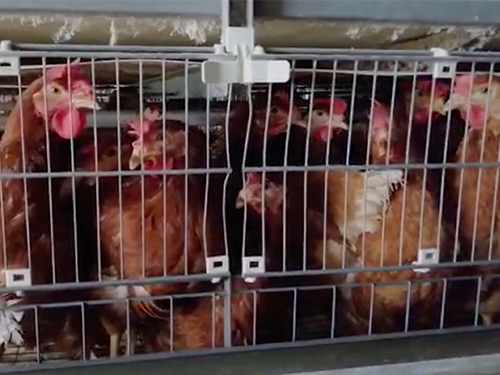
กรงแบตเตอรี่
สตาร์บัคส์ยังคงขายไข่ของลูกค้าจากซัพพลายเออร์ที่กักขังไก่ไว้ในกรงที่โหดร้ายและสกปรก
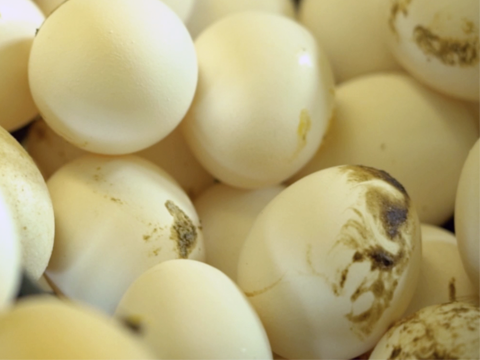
สกปรก
ในฟาร์มของซัพพลายเออร์ที่ผลิตไข่ให้กับสตาร์บักส์นั้น มูลไก่จะเลอะเทอะไปทุกส่วนจนเปื้อนติดไข่ไก่ด้วย
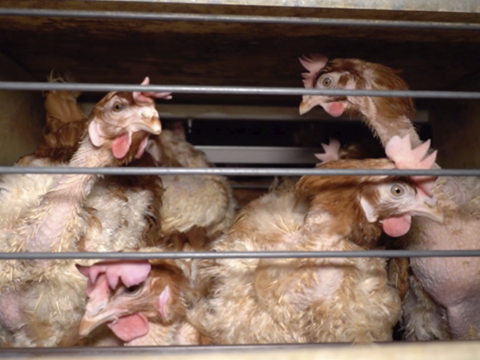
ทารุณ
แม่ไก่แต่ละตัวจะถูกขังในกรงแคบ ๆ จนแทบขยับตัวไม่ได้เกือบทั้งชีวิต
การดาวน์โหลดและเอกสารประกอบ
Equitas เป็นองค์กรไม่แสวงผลกำไรในสหราชอาณาจักรที่ทำงานเพื่อปกป้องลูกค้าและเพื่อสวัสดิภาพสัตว์ในอุตสาหกรรมอาหารทั่วโลก
การอ้างอิงความเสี่ยงด้านความปลอดภัยของอาหาร และการทารุณกรรมสัตว์ของกรงไก่แบตเตอรี่:
1: Van Hoorebeke S, Van Immerseel F, Schulz J, et al. 2010. Determination of the within and between flock prevalence and identification of risk factors for Salmonella infections in laying hen flocks housed in conventional and alternative systems. Preventive Veterinary Medicine 94(1-2):94-100.
2: Snow LC, Davies RH, Christiansen KH, et al. 2010. Investigation of risk factors for Salmonella on commercial egg-laying farms in Great Britain, 2004-2005. Veterinary Record 166(19):579-86.
3: 2010. Annual Report on Zoonoses in Denmark 2009. National Food Institute, Technical University of Denmark.
4: Van Hoorebeke S, Van Immerseel F, De Vylder J et al. 2010. The age of production system and previous Salmonella infections on farm are risk factors for low-level Salmonella infections in laying hen flocks. Poultry Science 89:1315-1319.
5: Huneau-Salaün A, Chemaly M, Le Bouquin S, et al. 2009. Risk factors for Salmonella enterica subsp. Enteric contamination in 5 French laying hen flocks at the end of the laying period. Preventative Veterinary Medicine 89:51-8.
6: Green AR, Wesley I, Trampel DW, et al. 2009 Air quality and bird health status in three types of commercial egg layer houses. Journal of Applied Poultry Research 18:605-621.
7: Schulz J, Luecking G, Dewulf J, Hartung J. 2009. Prevalence of Salmonella in German battery cages and alternative housing systems. 14th International congress of the International Society for Animal Hygiene: Sustainable animal husbandry : prevention is better than cure. pp. 699-702. http://www.safehouse-project.eu/vars/fichiers/pub_defaut/Schulz_Salmonella_ISAH%202009.ppt.
8: Namata H, Méroc E, Aerts M, et al. 2008. Salmonella in Belgian laying hens: an identification of risk factors. Preventive Veterinary Medicine 83(3-4):323-36.
9: Mahé A, Bougeard S, Huneau-Salaün A, et al. 2008. Bayesian estimation of flock-level sensitivity of detection of Salmonella spp. Enteritidis and Typhimurium according to the sampling procedure in French laying-hen houses. Preventive Veterinary Medicine 84(1-2):11-26.
10: Pieskus J, et al. 2008. Salmonella incidence in broiler and laying hens with the different housing systems. Journal of Poultry Science 45:227-231.
11: European Food Safety Authority. 2007. Report of the Task Force on Zoonoses Data Collection on the Analysis of the baseline study on the prevalence of Salmonella in holdings of laying hen flocks of Gallus gallus. The EFSA Journal 97. www.efsa.europa.eu/EFSA/efsa_locale-1178620753812_1178620761896.htm.
12: Snow LC, Davies RH, Christiansen KH, et al. 2007. Survey of the prevalence of Salmonella species on commercial laying farms in the United Kingdom. The Veterinary Record 161(14):471-6.
13: Methner U, Diller R, Reiche R, and Böhland K. 2006. [Occurence of salmonellae in laying hens in different housing systems and inferences for control]. Berliner und Münchener tierärztliche Wochenschrift 119(11-12):467-73.
14: Much P, Österreicher E, Lassnig. H. 2007. Results of the EU-wide Baseline Study on the Prevalence of Salmonella spp. in Holdings of Laying Hens in Austria. Archiv für Lebensmittelhygiene 58:225-229.
15: Stepien-Pysniak D. 2010. Occurrence of Gram-negative bacteria in hens’ eggs depending on their source and storage conditions. Polish Journal of Veterinary Sciences 13(3):507-13.
16: Humane Society International, “An HSI Report: Food Safety and Cage Egg Production” (2010). HSI Reports: Farm Animal Protection. 3. http://animalstudiesrepository.org/hsi_reps_fap/3
17: European Food Safety Authority. 2007. Report of the Task Force on Zoonoses Data Collection on the Analysis of the baseline study on the prevalence of Salmonella in holdings of laying hen flocks of Gallus gallus. The EFSA Journal 97. www.efsa.europa.eu/EFSA/efsa_locale-1178620753812_1178620761896.htm
18: The Danish Veterinary and Food Administration. 2004. The national Salmonella control programme for the production of table eggs and broilers 1996-2002. Fødevare Rapport 6, March.
19: Davies R and Breslin M. 2003. Observations on Salmonella contamination of commercial laying farms before and after cleaning and disinfection. The Veterinary Record 152(10):283-7.
20: Methner U, Rabsch W, Reissbrodt R, and Williams PH. 2008. Effect of norepinephrine on colonisation and systemic spread of Salmonella enterica in infected animals: Role of catecholate siderophore precursors and degradation products. International Journal of Medical Microbiology 298(5-6):429-39.
21: Bailey MT, Karaszewski JW, Lubach GR, Coe CL, and Lyte M. 1999. In vivo adaptation of attenuated Salmonella Typhimurium results in increased growth upon exposure to norepinephrine. Physiology and Behavior 67(3):359-64.
22: Shini S, Kaiser P, Shini A, and Bryden WL. 2008. Biological response of chickens (Gallus gallus domesticus) induced by corticosterone and a bacterial endotoxin. Comparative Biochemistry and Physiology. Part B. 149(2):324-33.
23: Rostagno MH. 2009. Can stress in farm animals increase food safety risk? Foodborne Pathogens and Disease 6(7):767-76.
24: Marino, L. 2017. Thinking chickens: a review of cognition, emotion, and behavior in the domestic chicken. Animal Cognition 20(2): 127–147.
25: “European_Union_Council_Directive_1999/74/EC.” Wikipedia: The Free Encyclopedia. Wikimedia Foundation, Inc. Web 03 August 2018, en.wikipedia.org/wiki/European_Union_Council_Directive_1999/74/EC
26: “Farm Animal Confinement Bans.” American Society for the Prevention of Cruelty to Animals. Web. 03 August 2018, www.aspca.org/animal-protection/public-policy/farm-animal-confinement-bans
27: World Organization for Animal Health, “Terrestrial Animal Health Code” (2017). www.rr-africa.oie.int/docspdf/en/Codes/en_csat-vol1.pdf


